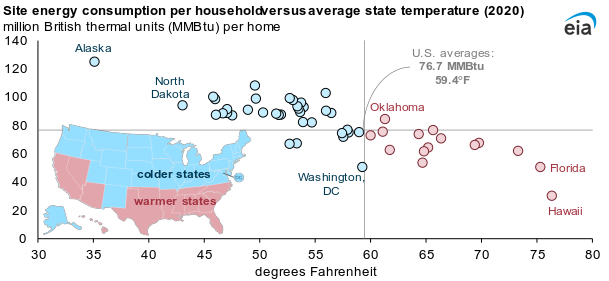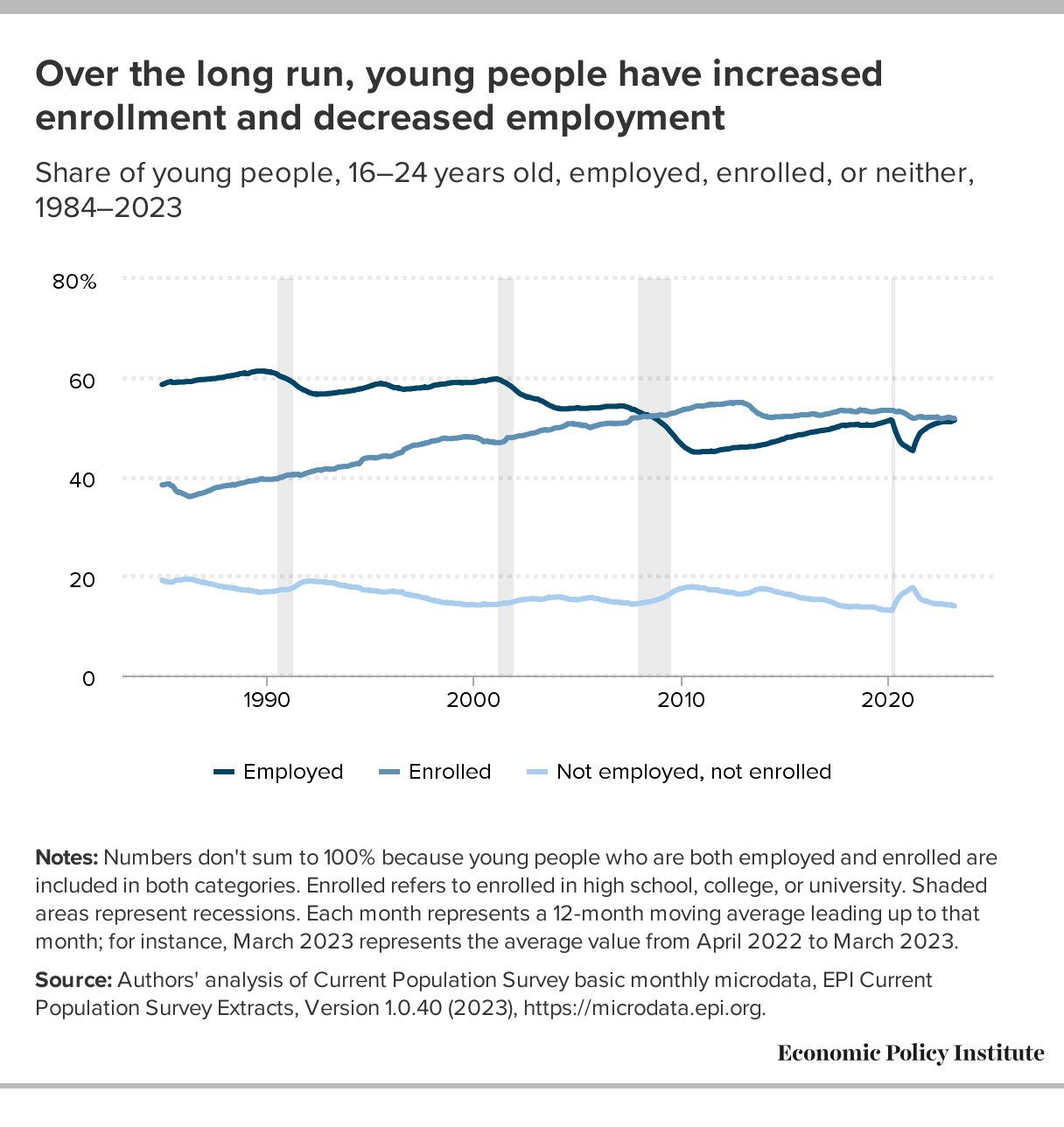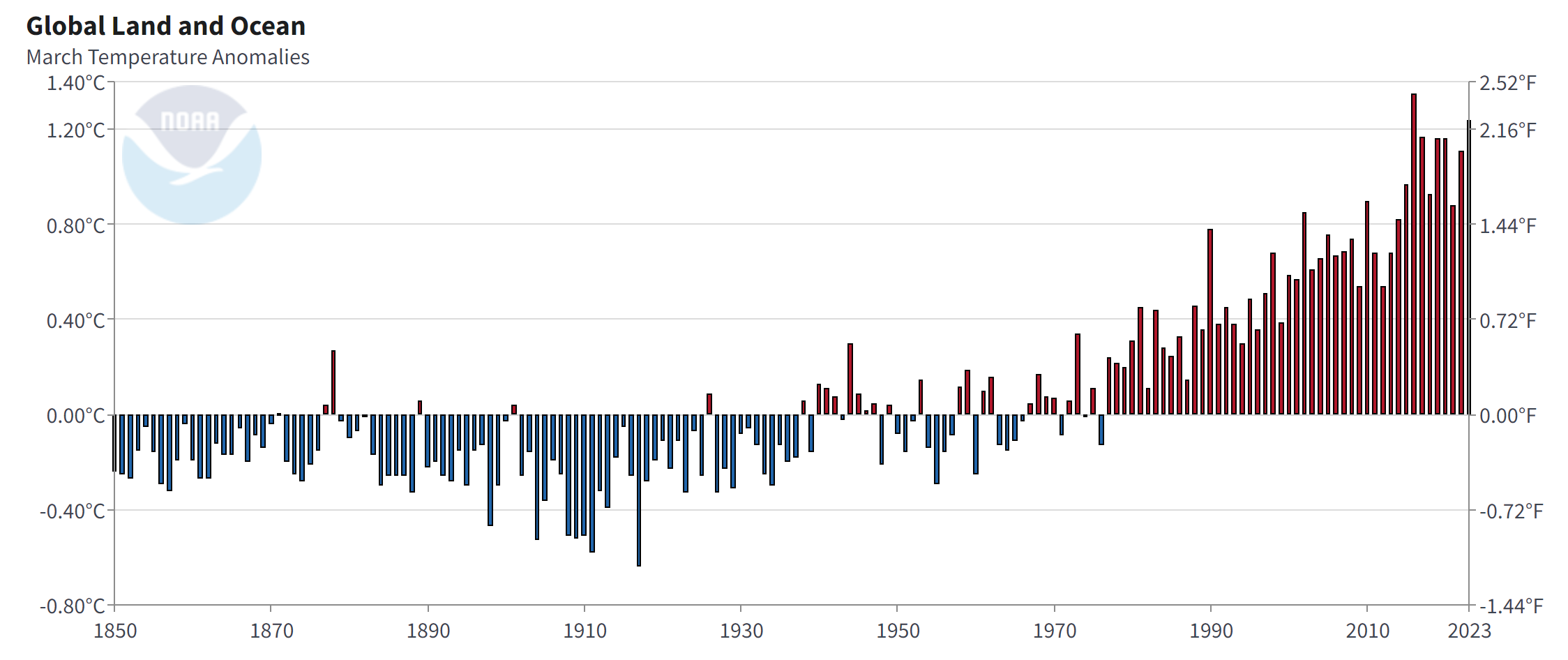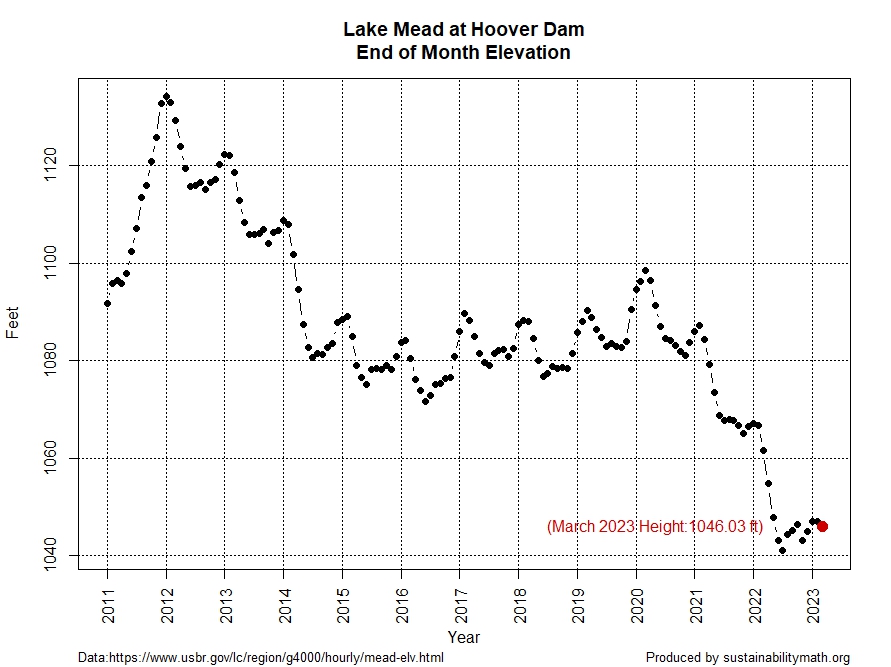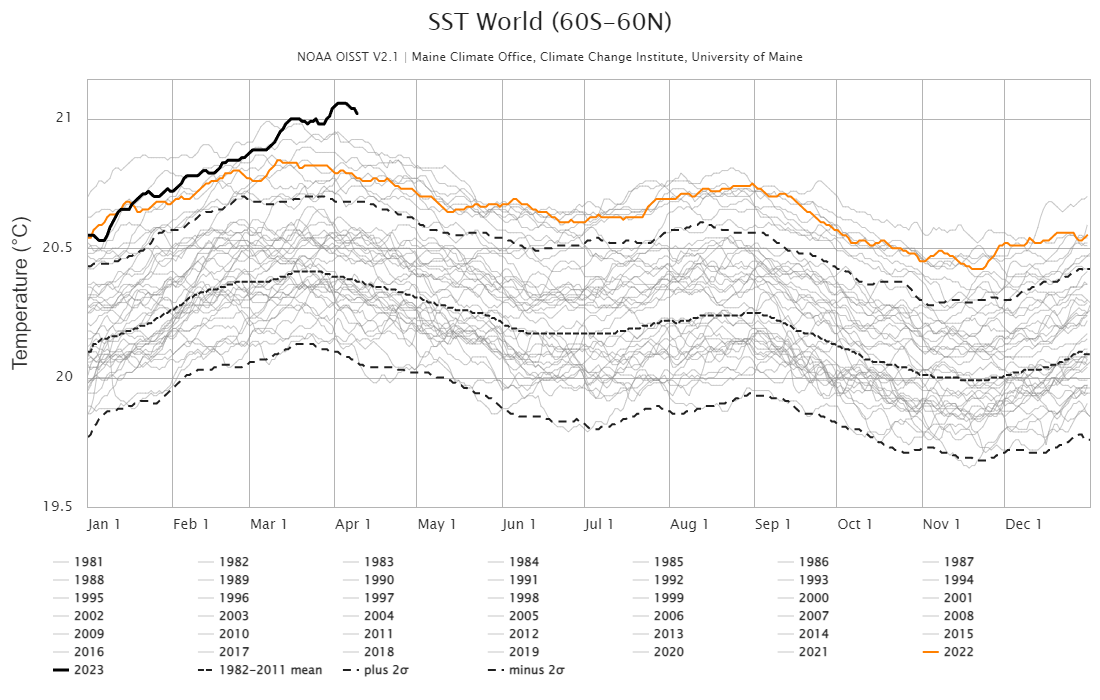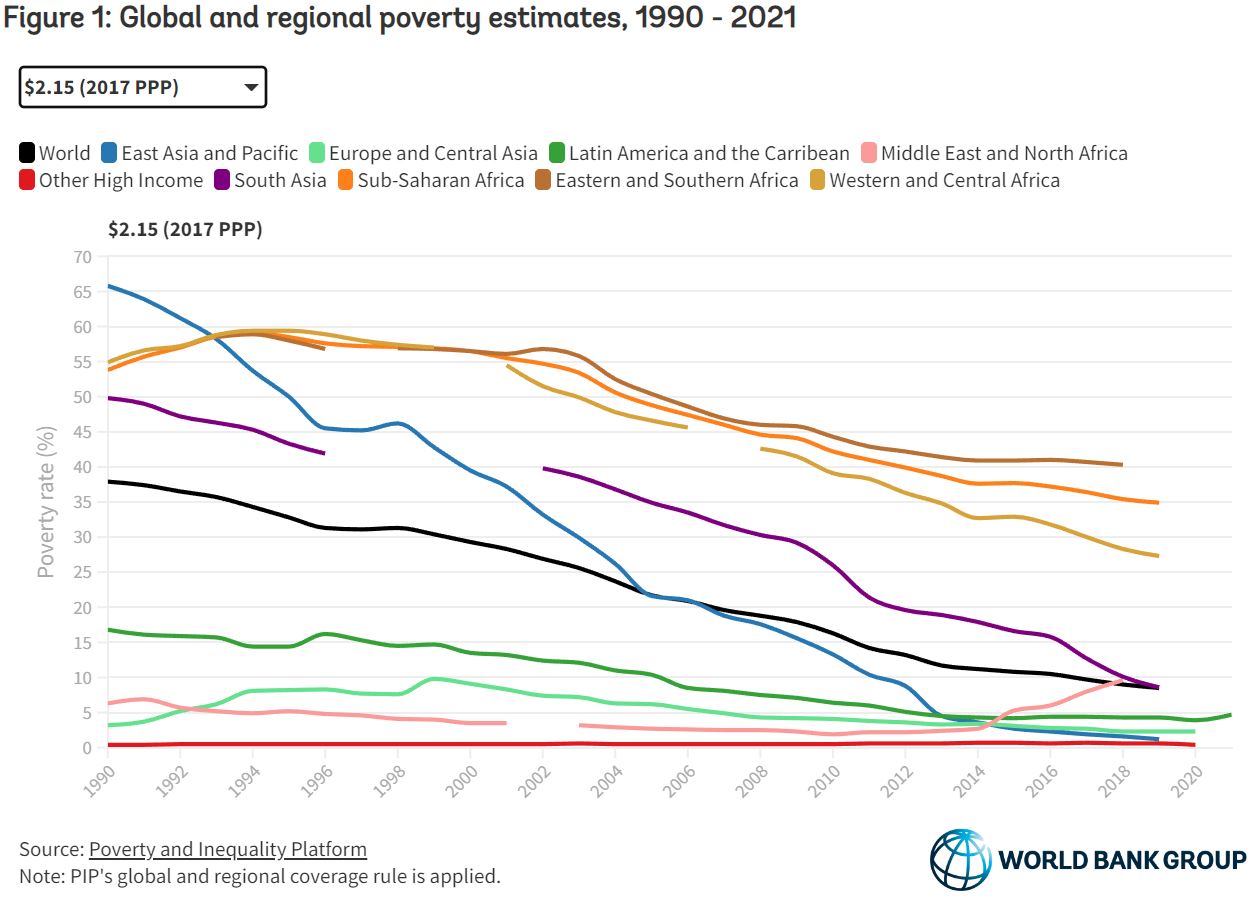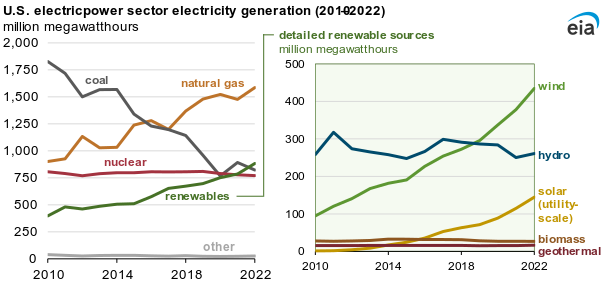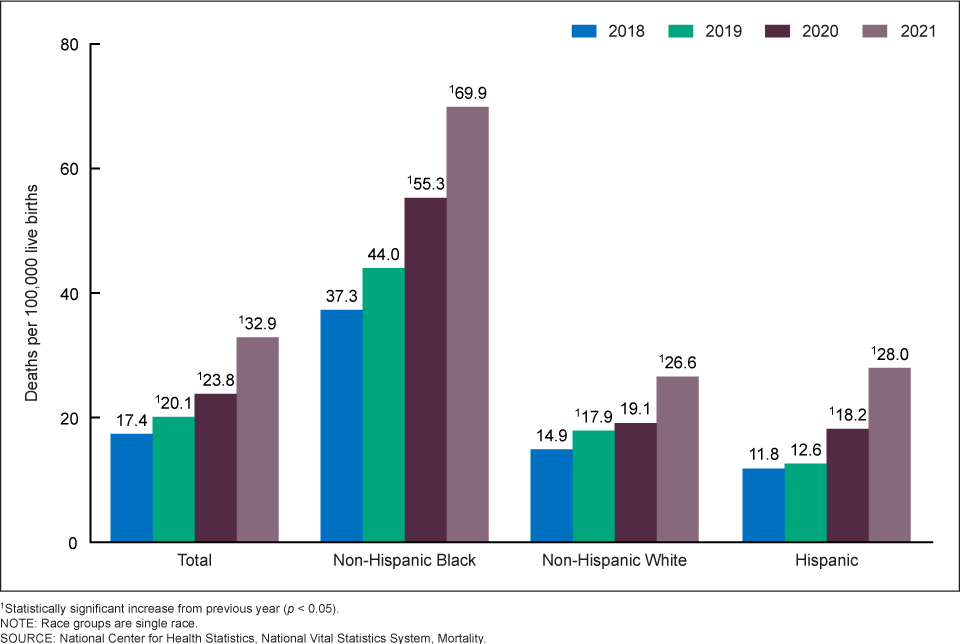
There has been some talk in the news about increasing maternal mortality in the U.S. This is due to the new CDC report Maternal Mortality Rates in the United States, 2021 by Donna L. Hoyert (3/16/2023). The graph here is one from the report. Clearly the upward trend started before COVID and there is a racial difference. We should note that another graph shows upward trends by age group too.
Rates in 2021 were 20.4 deaths per 100,000 live births for women under age 25, 31.3 for those aged 25–39, and 138.5 for those aged 40 and over (Figure 2 and Table). The rate for women aged 40 and over was 6.8 times higher than the rate for women under age 25. Differences in the rates between age groups were statistically significant. The increases in the rates between 2020 and 2021 for each of these age groups were statistically significant.
The article includes a table of data and the number of births women 40+ have increased, which might explain some, but not all, of the increase. Either way, the data is waiting for analysis is a statistics class.
As to the racial differences. In 2019 Kevin Drum reported on this in his post How Can We Reduce Black Maternal Mortality? He makes a case that the differences aren’t explained by racism; it is longish and worth reading. A few quotes:
The differences in allostatic load are tiny—about the equivalent of one IQ point on an intelligence test—and Hispanics have a higher allostatic load than either blacks or whites but the lowest maternal mortality rate.
Poor blacks report less stress and higher levels of optimism than both poor whites and poor Hispanics. Put all this together and the toxic stress/weathering hypotheses look shaky.
What it seems to tell us is that there’s a difference in when black mothers die. Any pregnancy-related death within a year of delivery is counted as maternal mortality, and the difference in IHM rates suggests that in white hospitals black mothers die at high rates in the hospital, while in black hospitals they die at high rates after going home.
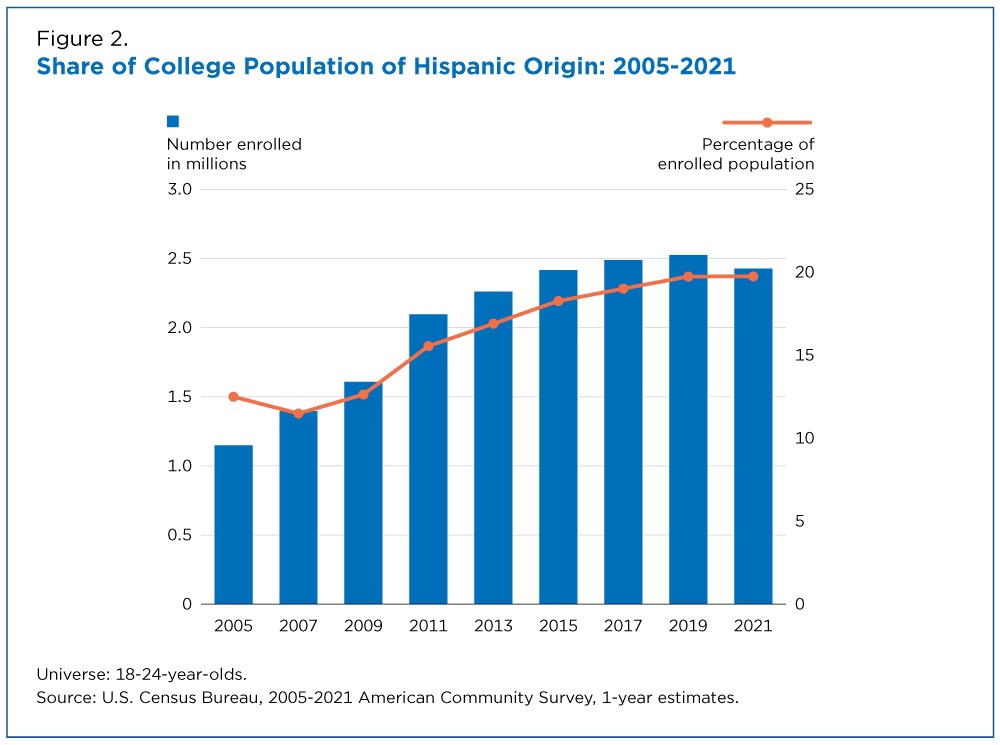 The Census Bureau article Gains in Educational Attainment, Enrollment in All Hispanic Groups, Largest Among South American Population by Erik L. Hernandez and Kevin McElrath (5/10/2023) notes
The Census Bureau article Gains in Educational Attainment, Enrollment in All Hispanic Groups, Largest Among South American Population by Erik L. Hernandez and Kevin McElrath (5/10/2023) notes